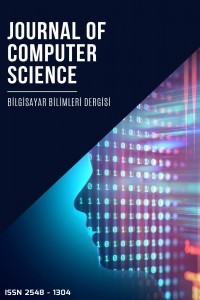A Note on Fractional Order Derivatives on Periodic Signals According to Fourier Series Expansion
: Fractional order derivative, orthogonality, Fourier series expansion
A Note on Fractional Order Derivatives on Periodic Signals According to Fourier Series Expansion
___
- [1]J. A. T. Machado, A probabilistic interpretation of the fractional-order differentiation Fractional Calculus and applied Analysis, vol. 6 pp.73-80,2003.
- [2] M. Moshrefi-Torbati, J.K. Hammond, Physical and geometrical interpretation of fractional operators,Journal of the Franklin Institute, vol. 335, pp.1077-1086, 1998.
- [3] I. Podlubny, Geometric and physical interpretation of fractional integration and fractional differentiation, Fractional Calculus & Applied Analysis, vol. 5 pp.367-386, 2002.
- [4] F.J. Molz, G.J. Fix, S. Lu, A physical interpretation for the fractional derivative in Levy diffusion, Applied Mathematics Letters, vol.15, pp. 907-911, 2002.
- [5] Ateş, A., Alagoz, B. B., Alisoy, G. T., Yeroğlu, C., Alisoy, H. Z ,"Fuzzy Velocity and Fuzzy Acceleration in Fractional Order Motion." Balkan Journal of Electrical and Computer Engineering vol.3,pp.98-102, 2015.
- [6] Ortigueira, M. D., Machado, J. T., & Trujillo, J. J. (2015). Fractional derivatives and periodic functions. International Journal of Dynamics and Control, pp.1-7,2015.
- [7] Manuel Duarte Ortigueira, Fractional Calculus for Scientists and Engineers, Springer Science & Business Media, 2011
- [8] Bruce West, Mauro Bologna, Paolo Grigolini, Physics of Fractal Operators, Institute for Nonlinear Science, Springer Science & Business Media, 2012.
- [9] Tavazoei, Mohammad Saleh. A note on fractional-order derivatives of periodic functions. Automatica vol.46 no.5,pp.945-948,2010.
- [10] Tan, N., Atherton, D.P. & Yüce, A., Computing step and impulse responses of closed loop fractional order time delay control systems using frequency response data, Int. J. Dynam. Control, pp.1-10, 2016.
- [11] Introductory Notes on Fractional Calculus, xuru.org
- [12] Petras I. Stability of fractional-order systems with rational orders: a survey. Fractional Calculus and Applied Analysis, vol.12 no.3,pp.269-298,2009.
- [13] Das S. Functional Fractional Calculus (Second edition). Berlin: Springer, 2011.
- [14] Adam Loverro, Fractional Calculus: History, Definitions and Applications for the Engineer, Lecture Notes, University of Notre Dame, Online available http://www3.nd.edu/~msen/Teaching/UnderRes/FracCalc.pdf.
- [15] Atherton, Derek P., Nusret Tan, and Ali Yüce. Methods for computing the time response of fractional-order systems. IET Control Theory & Applications vol.9 no.6, pp817-830,2015.
- ISSN: 2548-1304
- Yayın Aralığı: Yılda 2 Sayı
- Başlangıç: 2016
- Yayıncı: Ali KARCI
Otomatik Ve İnteraktif Bölütleme Yöntemlerinin Karşılaştırılması
Serdar Alasu, Muhammed Fatih Talu
Design of a Resource Management for GPGPU Supported Grid Computing
Emrullah ACAR, Mehmet Siraç ÖZERDEM
A Note on Depth Estimation from Stereo Imaging Systems
Embedding Hierarchical Fibonacci Cubes In Faulty Hierarchic Cubic Networks
A Note on Fractional Order Derivatives on Periodic Signals According to Fourier Series Expansion
